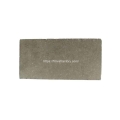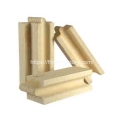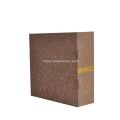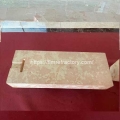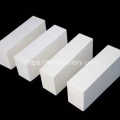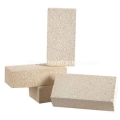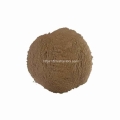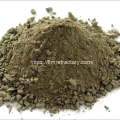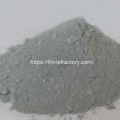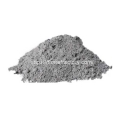- Performance. Innovation. Worldwide. Your trustworthy Refractories Manufacturing Partner--Fireramo
- +86 175 3769 7777
Contact
Contact us on WhatsApp
High Quality Refractory Bricks
Insulation Bricks for Sale
Monolithic Refractory
Ten common refractory bricks use and use requirements
Refractory bricks are a special kind of building materials with excellent high temperature resistance, which are widely used for in high temperature industrial fields. What are Refractory bricks used for? Different types of refractory bricks have their own unique characteristics and uses.Fireramo will introduce ten common types of refractory bricks.
Fireclay Bricks
Fireclay refractory bricks are mainly made of clay, with excellent refractory performance and wear-resistant performance.
Uses
Refractory clay bricks are used for the refractory masonry of general furnaces. Kiln lining materials, furnace walls, furnace floor, flue, etc. The use of temperature below 1250 ℃. Combustion chamber parts, allowing the use of more than 1400 ℃.
High Alumina Brick
High-alumina bricks are refractory materials made of high-alumina minerals as the main raw material. It has excellent refractory performance and corrosion resistance, and can withstand chemical erosion and hot and cold cycles at high temperatures.
Uses
High-alumina bricks are commonly used in high-temperature, wear-resistant areas of furnaces and kilns such as steelmaking, ironmaking, non-metallic smelting, or masonry with large loads, burner bricks, and masonry with special requirements. The vault of the high-temperature zone of the combustion chamber, allowing the use of temperature 1300 ~ 1650 ℃.
High quality alumina refractory bricks for sale
Mullite refractory bricks
Mullite bricks have excellent refractory properties and corrosion resistance, and can withstand chemical erosion and hot and cold cycles at high temperatures.
Use of Mullite Refractory Bricks
Mullite refractory bricks are commonly used in metallurgy, chemical industry and glass and other high-temperature industrial fields, such as glass kilns, coke ovens and electrolytic tanks. It also has high slag resistance and thermal shock stability, and can maintain good stability under high temperature environment.
Lightweight Clay Brick
The physical and chemical indexes of lightweight clay bricks, the permissible deviation of product size and the sectional requirements of shape products should be in accordance with the specification.
Uses
Lightweight clay bricks, as a high temperature slag and erosive gases from the erosion of the kiln lining, depending on the capacity, the use of temperature between 1150 ~ 1400 ℃.
Lightweight High Alumina Brick
Lightweight high alumina brick is a kind of refractory material with high aluminate as the main component, which is sintered at high temperature and has light weight, high strength and good refractory performance. It can withstand slag erosion and hot and cold cycles at high temperatures and protect the structure of smelting equipment.
Uses
Lightweight high alumina bricks are used for heat-resistant lining with working temperature lower than 1350°C. They can also be used for masonry without erosion and scouring effect of high temperature melts, which can be in direct contact with flame.

Corundum Brick
Corundum bricks have very high refractoriness and corrosion resistance, and are able to withstand chemical erosion at high temperatures and maintain the structural stability of the equipment.
Uses
General corundum bricks are suitable for the lining of the fire face of heavy oil gasifier with working pressure below 3MPa, the important part of the lining of the incinerator containing saline wastewater, and the bricks of the radiant burner working under high temperature. General corundum bricks are used at temperatures below 1600~1670℃.

Fused corundum bricks
Fused corundum bricks are widely used in various high-temperature industrial fields because of their high refractoriness, abrasion resistance and corrosion resistance.
Usage
Fused corundum bricks are suitable for strong reducing atmosphere, high pressure of hydrogen and high temperature water vapor. Such as large ammonia synthesis plant, one-stage reformer gas pipe lining and two-stage reformer lining brick, high temperature furnace lining. Fused corundum brick physical and chemical indexes, size allowable deviation should be in line with the provisions of the specification. The use temperature of electrofused corundum is below 1600℃~1670℃.
Light alumina products
Light alumina products (such as light corundum bricks) are commonly used in high-temperature furnace kiln heat-resistant, heat-insulating lining, high-temperature, high-pressure water vapor erosion of the lining. Light alumina products are generally used in non-fire lining. Light alumina products for the use of temperature below 1400 ℃.
Silicon Carbide Brick
Silicon carbide bricks have good thermal conductivity, good thermal stability, resistance to reducing atmosphere, and high strength.
Usage
Silicon carbide bricks are often used as heat-resistant, wear-resistant lining, and need to have good thermal stability, thermal conductivity and resistance to reducing atmosphere.
Silicon carbide refractory bricks are widely used in high-temperature equipment in metallurgy, chemical and electric power industries, such as electric furnaces, steel-making furnaces and copper furnaces.
Silicon carbide refractory products are used at temperatures below 1400~1600℃.
Silicate bricks
Silicate bricks have good refractory performance and corrosion resistance.
Usage
Silicate bricks are able to withstand hot and cold cycles in high temperature environments, and are suitable for a variety of high-temperature equipment, such as kilns, hearths and flues. Silicate refractory bricks also have high compressive strength and seismic performance, and can maintain structural stability under extreme conditions.
Specializing in refractory materials for over 20 years, we provide professional refractory solutions for the global high temperature industry.
Related Posts:
- Causes and solutions to cracking of castables after baking
- Enhancing the Medium Temperature Strength of Refractory Castables
- Ways to ensure the accuracy of refractory brick acceptance results
- Acceptance inspection after cement kiln construction
- Three Common Ways of Damage to the Sliding Nozzle for Ladles
Theme By Fireramo
